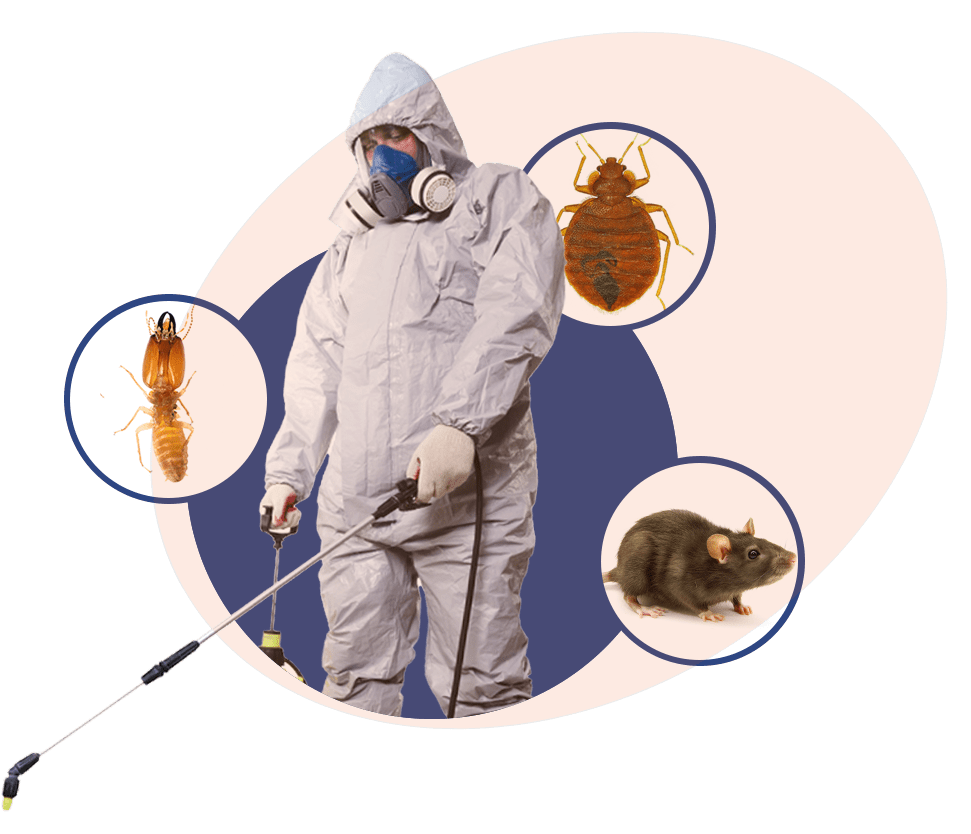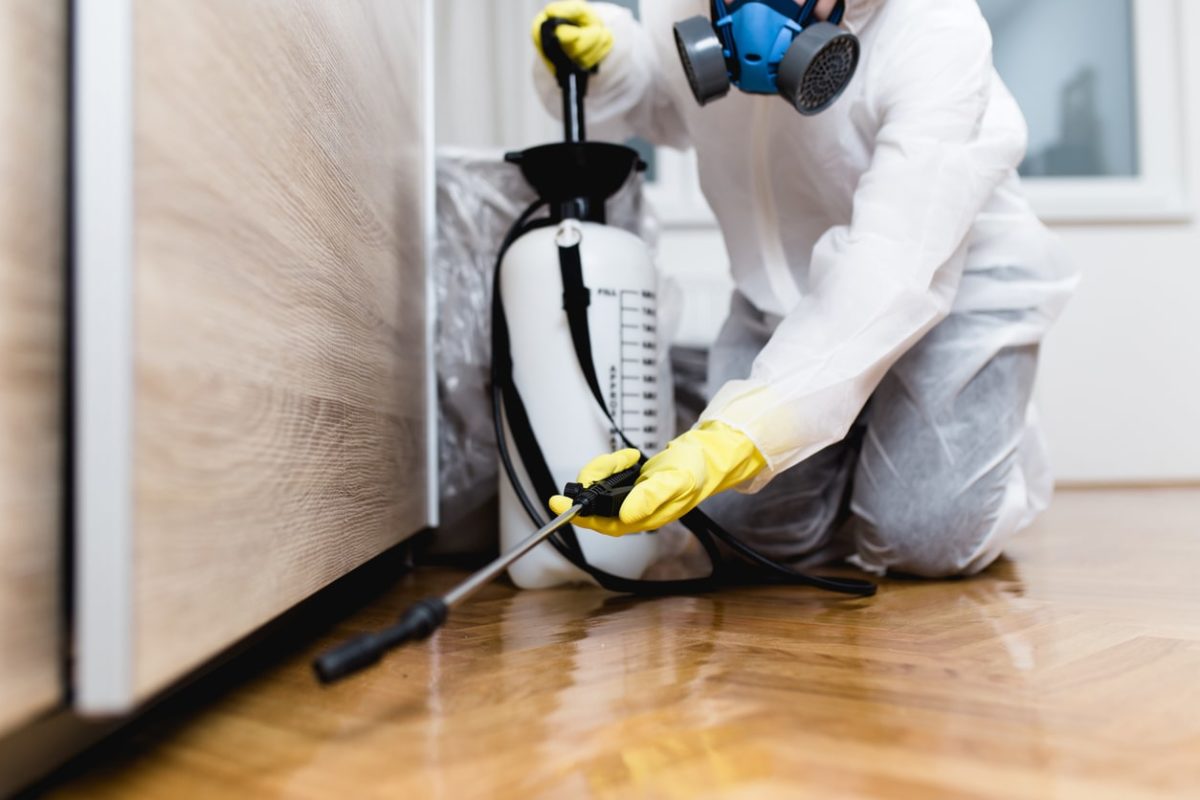Pest Control services to protect your home from harmful insects.
Eco-Friendly Insect Control Approaches for Taking Care Of Wildlife in Urban Areas
Urban locations frequently locate themselves at the intersection of human activity and wildlife, causing one-of-a-kind challenges in bug management. Environment-friendly strategies stress sustainable conjunction, employing strategies such as environment modification and natural repellents to alleviate human-wildlife problems. These strategies not just secure the atmosphere yet likewise improve community involvement in wild animals monitoring. As metropolitan populaces remain to grow, recognizing the dynamics of wildlife communications comes to be progressively vital. What ingenious methods can be applied to make certain both ecological balance and metropolitan safety? Exploring this inquiry discloses an engaging landscape of potential solutions.
Comprehending Urban Wildlife Characteristics
Recognizing Urban Wildlife Dynamics is vital for creating reliable and environment-friendly bug control methods. Urban areas are progressively coming to be habitats for different wildlife species, driven by elements such as habitat fragmentation, food availability, and human infringement. Recognizing these characteristics enables a nuanced technique to pest management that lines up with ecological principles.
Urban wild animals usually consists of varieties such as raccoons, squirrels, and birds, which adapt to city atmospheres, finding particular niches in green rooms, parks, and even suburbs. Their presence can bring about problems with human beings, especially when they exploit personnels for food and sanctuary. Comprehending the habits and eco-friendly roles of these species educates strategies that reduce unfavorable interactions while promoting biodiversity.
In addition, acknowledging the interdependencies within city ecological communities helps in recognizing essential areas for environment preservation and reconstruction. This expertise adds to the growth of integrated parasite monitoring (IPM) methods that consider the environmental balance, thus minimizing dependence on unsafe chemicals. By fostering coexistence between people and metropolitan wildlife, cities can produce healthier environments that benefit both homeowners and local ecosystems, paving the way for sustainable city living.
All-natural Repellents and Deterrents
All-natural repellents and deterrents use a lasting option to conventional bug control approaches by using the power of nature to keep unwanted species at bay. These environmentally friendly solutions typically use plant-based active ingredients, important oils, and other naturally occurring compounds that prevent parasites without hurting the setting.
One efficient natural repellent is peppermint oil, which is known to repel rats and bugs. Its solid fragrance is unpleasant to several insects, making it a preferred selection for city settings. Vinegar and citrus peels can offer as deterrents, as their strong odors are generally uninviting to different wildlife.
Furthermore, diatomaceous earth is an all-natural powder that can be spread out in areas prone to pest activity, effectively dehydrating and deterring pests without posing threats to non-target varieties. Furthermore, garlic sprays and neem oil are acknowledged for their capacity to drive away a vast array of insects, including both bugs and bigger wildlife.
Executing these natural repellents not just reduces dependence on chemical pesticides but additionally advertises a healthier city community, fostering a more well balanced conjunction in between human beings and wild animals. By utilizing these approaches, city areas can efficiently manage insect populaces while reducing ecological influence.
Habitat Alteration Techniques
Efficient habitat alteration methods play a critical function in lasting parasite administration by altering the setting to make it much less for pest invasions. By understanding the ecological dynamics of urban areas, homeowner can apply tactical modifications that hinder pests while advertising biodiversity.
(Silverfish control Port Charlotte)One primary strategy entails keeping correct sanitation. This includes routine waste removal, safeguarding trash can, and getting rid of standing water to reduce reproducing sites for bugs and rats. In addition, landscape design methods such as selecting native plants can enhance environmental equilibrium, providing environments for beneficial microorganisms while minimizing resources for insects.
One more important strategy is to seal entrance factors in structures. Examining and repairing fractures in foundations, wall surfaces, and windows can significantly decrease insect accessibility. Moreover, producing physical obstacles, such as fences or plant barriers, can prevent wildlife motion right into human-inhabited areas.
Integrated Bug Management Practices
Building upon habitat adjustment strategies, integrated insect management (IPM) methods use an alternative approach to controlling parasite populaces while minimizing ecological impact. IPM combines numerous techniques, consisting of organic, social, mechanical, and chemical controls, to achieve reliable insect management.
Organic control involves the introduction of natural predators or parasites to minimize insect populations. Social practices, such as plant turning and hygiene, interrupt pest life cycles and decrease their habitats - Pest Control. Mechanical controls, like catches and obstacles, provide instant relief from insect stress without chemical treatment
Chemical controls are utilized as a last resort, concentrating on targeted applications that limit damage to non-target types and the atmosphere. The option of eco friendly chemicals, when needed, is integral to the IPM framework. Furthermore, checking insect populaces and assessing possible damage assists educate decision-making, guaranteeing that interventions are timely and reliable.
Neighborhood Involvement and Education

(Stable Fly Control)Workshops and educational sessions can outfit locals with understanding regarding native types, environment conservation, and effective safe bug management strategies. Partnership with schools, local organizations, and government companies even more improves academic outreach, ensuring that crucial details gets to varied target markets.
Additionally, community-led initiatives, such as community clean-up days and environment remediation projects, not only advertise biodiversity Stable Fly Control yet likewise reinforce area connections. Pest Control. By encouraging homeowners to share their experiences and observations, communities can establish targeted methods that deal with particular neighborhood pest concerns
Incorporating responses from residents right into pest management plans allows a much more receptive and adaptive strategy to wildlife challenges. Ultimately, educated and engaged areas are key to accomplishing lasting success in green pest control, causing much healthier city settings that value both human and eco-friendly requirements.

Verdict
Finally, environment-friendly insect control comes close to offer lasting options for handling metropolitan wildlife. By prioritizing habitat adjustment, utilizing natural repellents, and carrying out incorporated bug administration practices, communities can promote a harmonious coexistence with neighborhood fauna. Engaging residents through education and learning improves understanding and urges responsible wild animals communications. Inevitably, these approaches not only secure biodiversity however additionally promote environmental health, making sure urban locations stay vibrant ecosystems where people and wildlife prosper together.